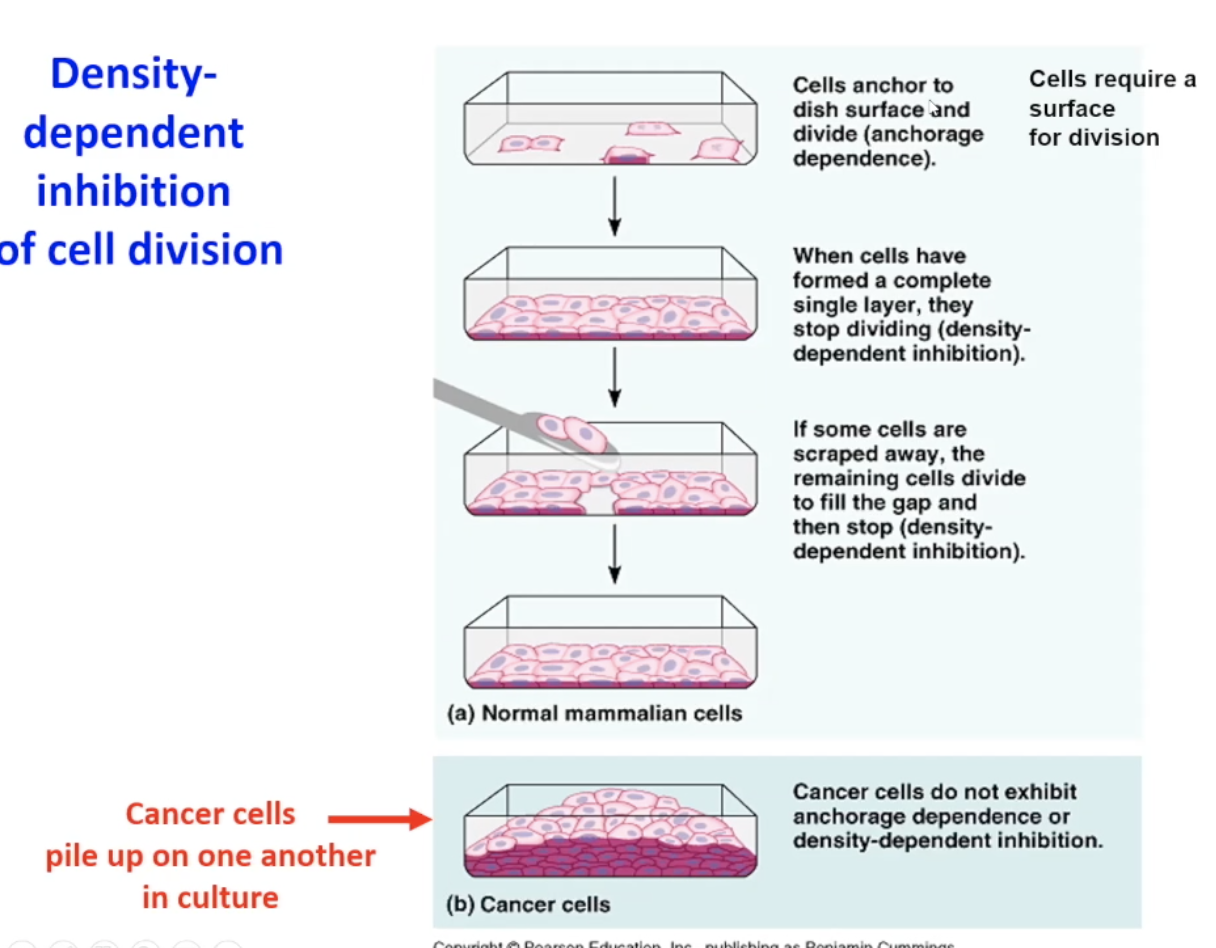Cancer videos 1&2
1/21
There's no tags or description
Looks like no tags are added yet.
Name | Mastery | Learn | Test | Matching | Spaced |
|---|
No study sessions yet.
22 Terms
cells collaborate
send, retrieve, interpret signals to tell each other how to act
cells are socially responsible, resting, dividing, differentiating, drying for good of the organism
disturbances can trouble the harmony
cell signaling
cells get a multitude of signals at a time
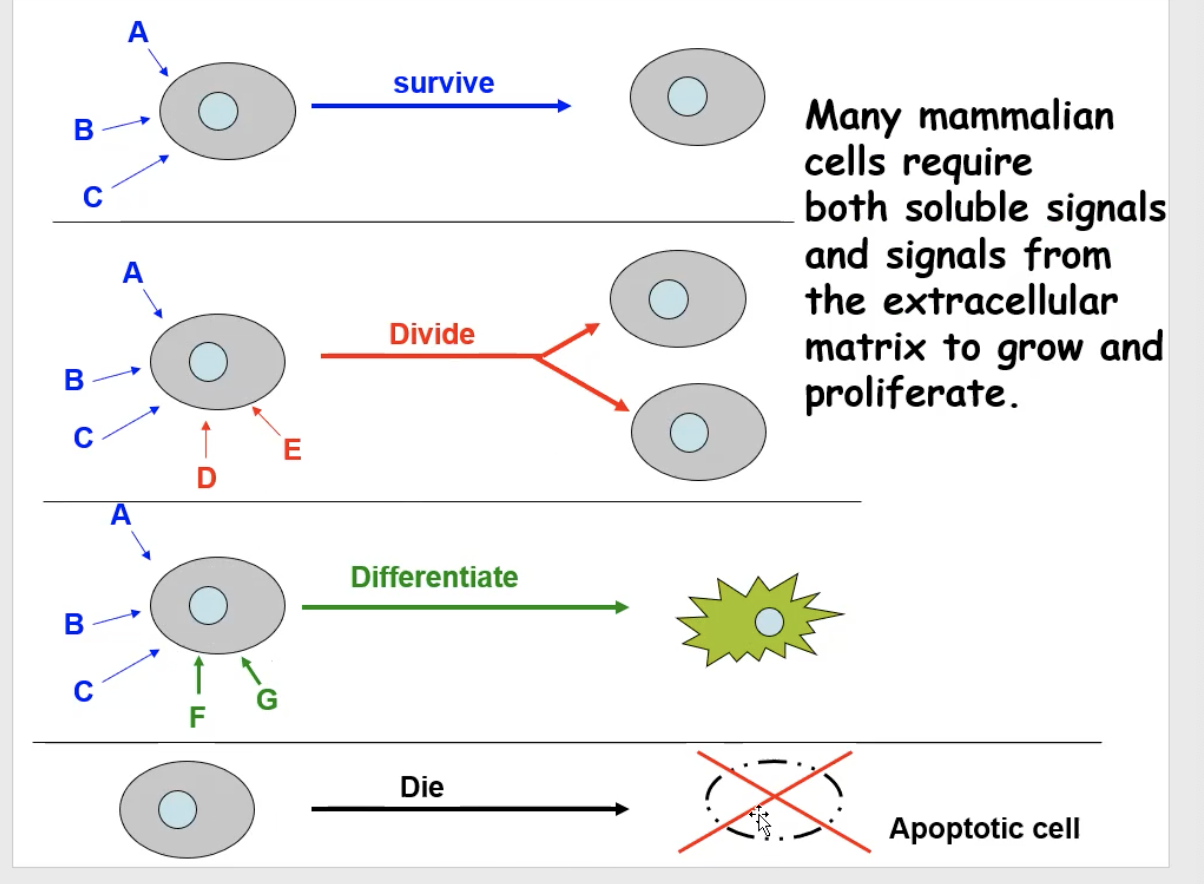
cancer definition
disease in which an individual mutant clone of cells prospers at the expense of its neighbors
mutations that promote this destructive duplication can jeopardize the organism
by the time a tumor is detected, already 1bilion cancer cells produced
cancerous cells
They don’t listen to signals that tell them how to coordinate
They don’t need a series of signals for division
They can turn on signal transduction pathways without a signal
socially respocible cell division
repair
fight infection
growth of an organism
replace
2 main signals responsible for cell growth/division
mitogen, growth factors
mitogen
initiates/cmtinues mitosis
stimulatory signal (stimulates mitosis)
extracellular signals (comes from other cells) usually neighbors
mitogen binding to a receptor is the activation needed to drive the cell cycle
Growth factors
stimulates increase of cell mass
promotes synthesis of macromolecules + inhibits their degradation
growth factor binding to receptor is the activation needed fot nutrient uptake and utilization
cell divsion quality control
cells have to monitor its progression throughout the cycle
they have checkpoints to check if the cellular conditions are appropriate to keep mitosis going
if it doesn’t pass through the checkpoints, it will apoptose
g1 checkpoint
The cell will pass G1
Mitogens are present (cells can’t progress from G1 to S unless mitogens have been secreted on the cells to tell it to continue to go through mitosis)
the cell should be large enough
There should be enough nutrients in the cell’s surroundings to support mitosis
Its DNA should not be damaged.
G2 checkpoint
The cell will continue mitosis if
Cell size is adequate
Chromosome replication is successfully completed (if chromosomal replication is not accurate, it will not continue mitosis)
Metaphase checkpoint
happens during mitosis
continues to go to anaphase if all the chromosomes are attached to a mitotic spindle
causes of tumors
loss if internal balance (homeostasis):
increased cell division can cause tumors
decreased apoptosis can cause tumors
increased cell division + decreased apoptosis can cause tumors (most cancers have this combo)
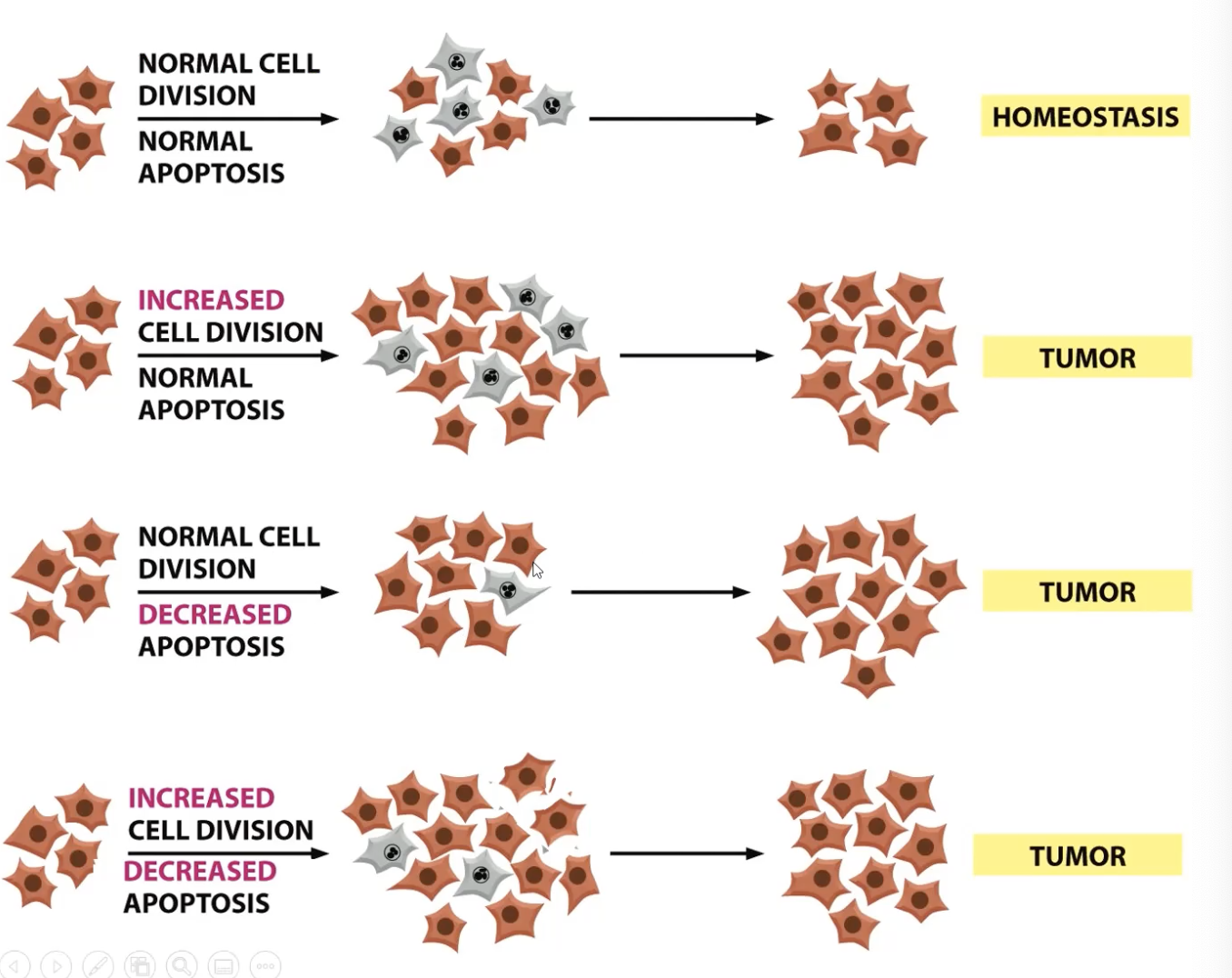
what causes uncontrolled cell division
Different cancers are caused by different defects that lead to uncontrolled cell division
All cancers come from mutations that cause defects in proteins that regulate the cell cycle and are involved in maintaining chromosomal stability. Mutations knock out the functions of key genes
development of cancer
Initiating mutation - a mutation causes one cell to act abnormally. The mutated cell has a proliferation (offspring producing) advantage
mutated cell abnormally divides a few times (faster than the speed of the unmutated cells) so now there’s copys of this mutated cell
another mutation happens to one of the copies (this cell is now two mutations away from a regular healthy cell)
The second mutation causes the cell to have a bigger proliferation advantage
progression- more mutations accumulate. Cells that divide or survive faster/better are selected for
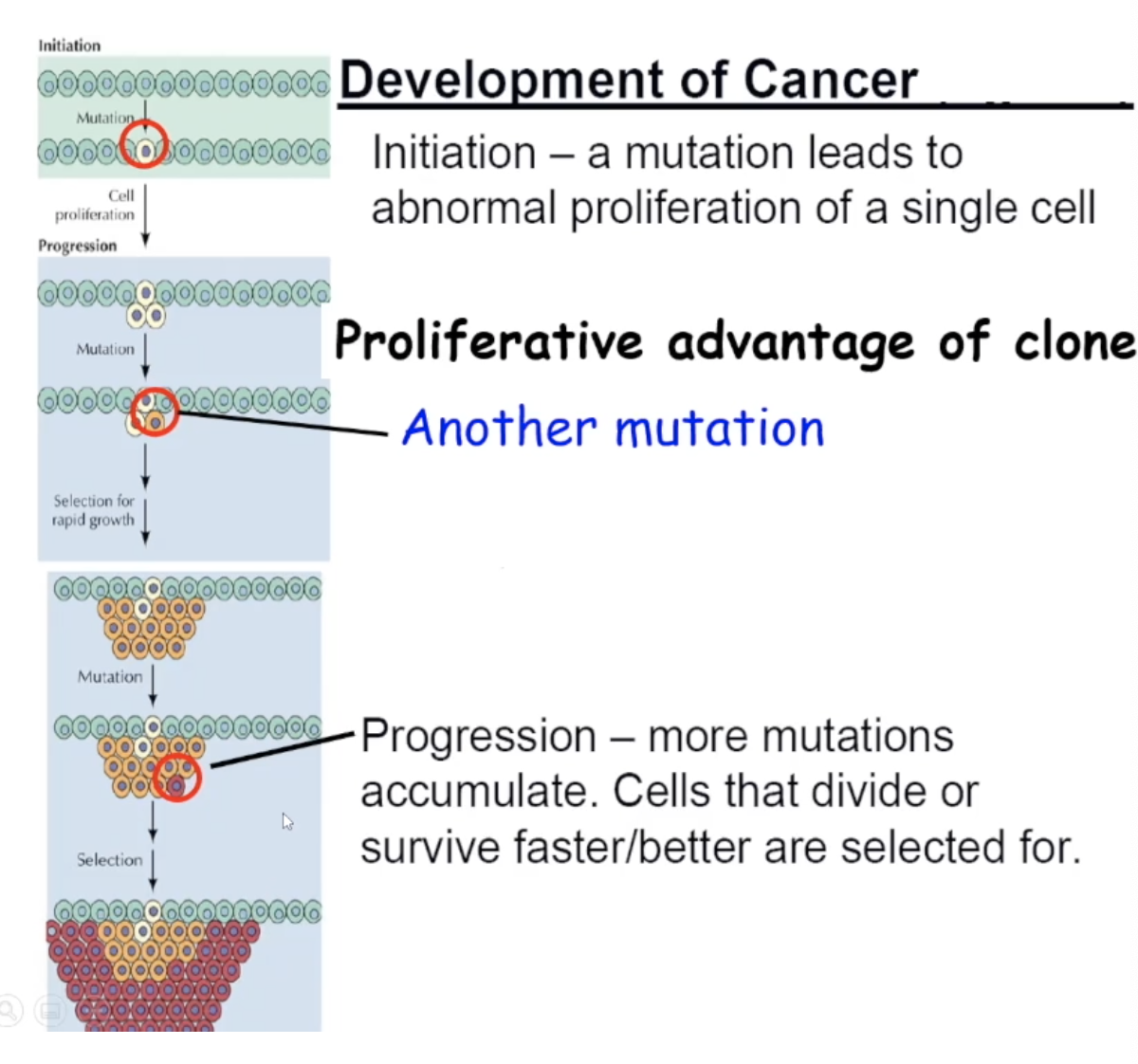
mutation
A mutation is a change in the DNA sequence of an organism. It can occur at any point in the genome and can involve the addition, deletion, or alteration of nucleotides.
how many mutations linked to cancer
cancer doesn’t arise from 1 mutation
cancer is an accumulation of mutations
normal cell response
They respond to growth factors and mitogens
They respond to growth factors and mitogen inhibitors
They respond to apoptosis signals
properties shared by many cells capable of cancerous growth
disregard external and internal signals
altered responses to apoptotic signals
they get around limitations on proliferation→example: gets passed replicative senescence
genetically unstable. Their DNA can have extra chromosomes, fewer chromosomes, or fused chromosomes
They can escape from their home tissues and be invasive
Some can survive and proliferate in foreign sites (known as metastasizing and is not an easy process),
Many induce help from nearby cells (angiogenesis) and modify nearby cells
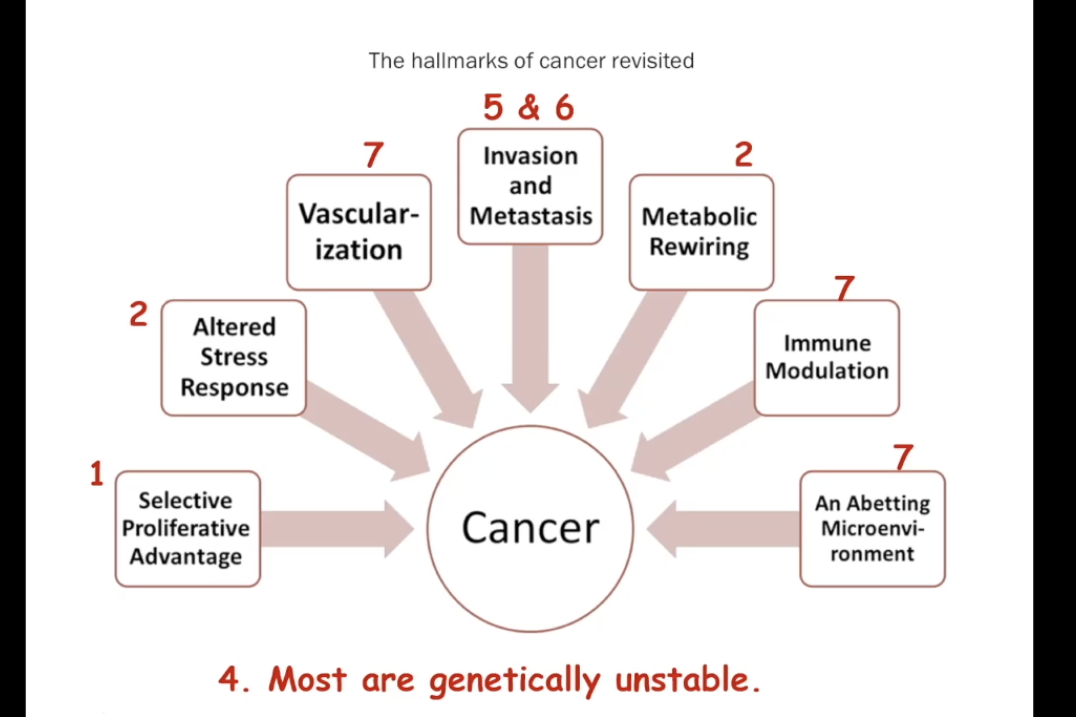
replicatice senescence
normal cells permanently stop dividing after a certain number of divisions (replicative senescence) because With every cell division, telomeres get shorter. eventually The critically short telomeres trigger a DNA damage response, signaling to the cell that it can no longer divide. The cell enters a permanent state of cell cycle arrest called replicative senescence, where it stops dividing but remains alive.
Normal cells require grwoth factors mitogemn
In basic growth medium plus PDGF (growth factor), normal cells proliferate. In a growth medium alone, cells fail to divide
Some cancer cells can be grown in basic growth media alone
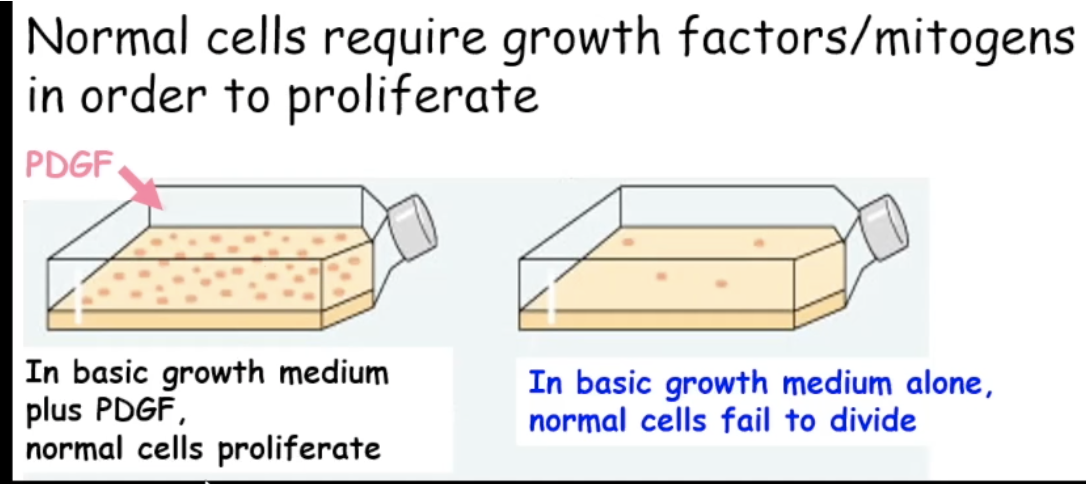
density dependent inhibition of cell division
NORMAL CELLS
many cells require a surface for divison
if you plate them, they attach to the surface and form a monolayer (Anchorage dependence)
each cell is getting signals from the cells around it whixha llowa it to know the density of the cells around it
this gives a negative signal (telling it to not divide)
so if you scared a part of the monolayer the cells around the scrape would divide again and then stop when its filled (density dependent inhibition)
CANCER CELLS
cancer cells do not exhibit Anchorage dependence (they can grow and divide without being attached to a solid surface or extracellular matrix)
they don’t exhibit density dependent inhibition
